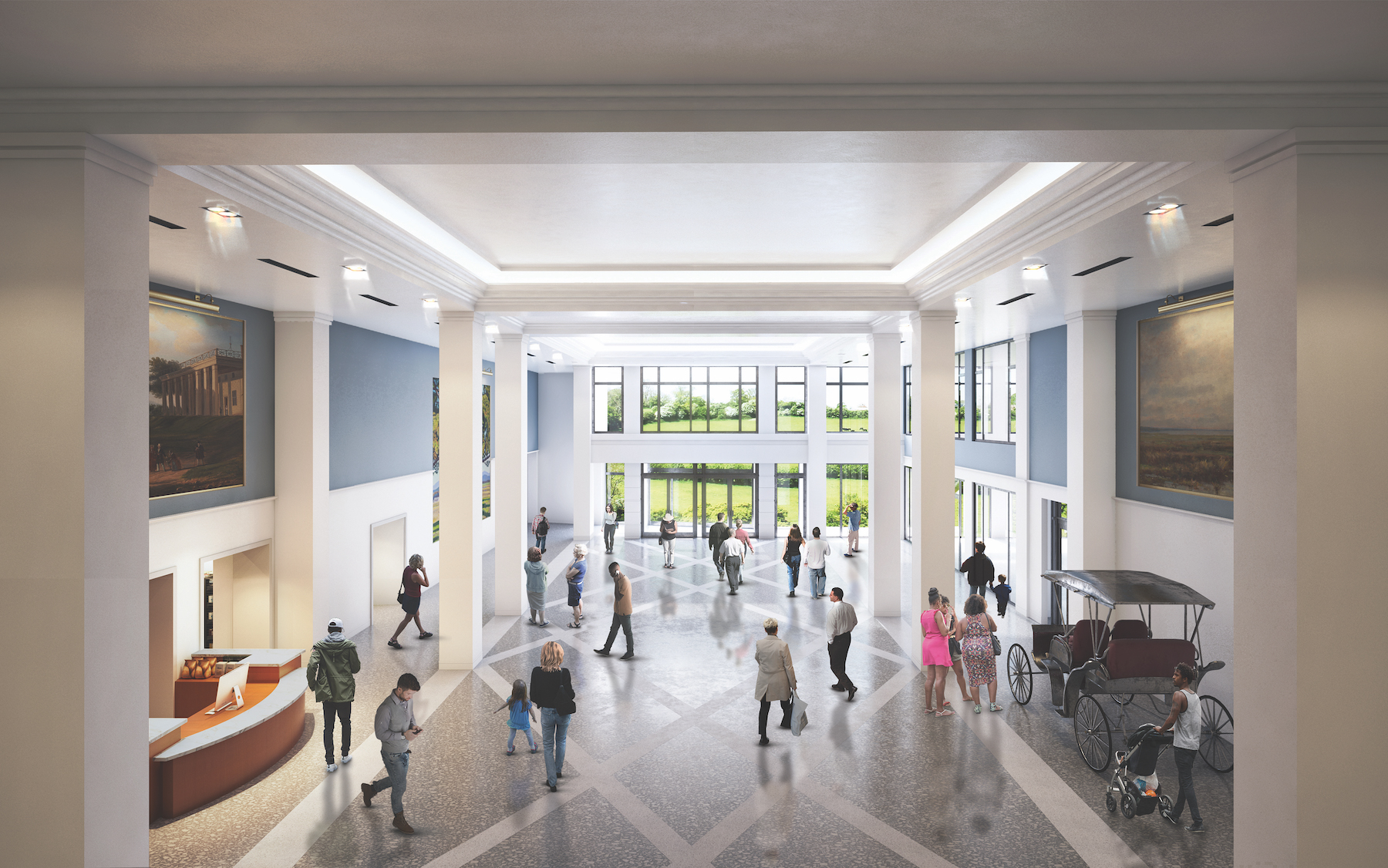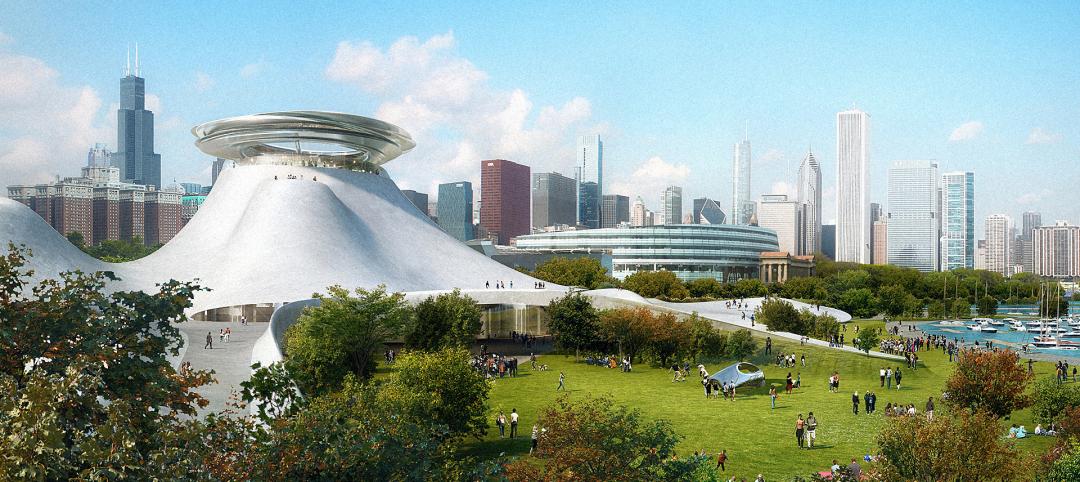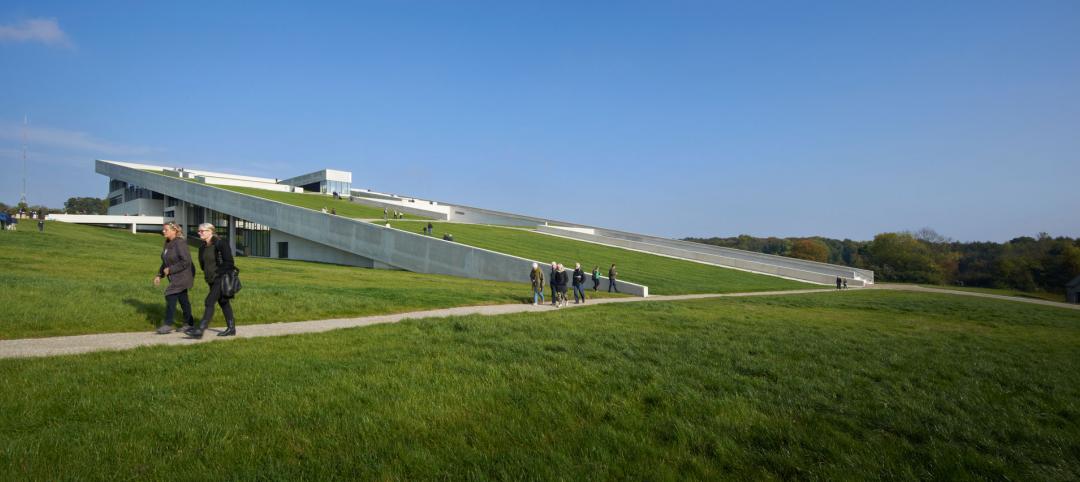The Virginia Historical Society is preparing to reopen its Virginia Museum of History & Culture, which has undergone an 18-month, $30 million-plus renovation that is the most extensive in the institution’s 200-year history.
The Museum, located in Richmond, is planning a grand reopening for the weekend of May 14 and 15, when it will officially unveil to the public a renovation that touches nearly two-thirds of the museum’s 250,000 sf. The project adds about 50 percent more exhibition space, a new research library, a grand two-story entrance atrium, an immersive orientation theater, several community meeting spaces, a connection between the Museum of History & Culture with the Virginia Museum of Fine Arts, an enhanced green space, and new amenities that include a café and museum store.
Glavé Holmes is the architect for this renovation, and Whiting-Turner Construction the GC. The PRD Group provided the exhibition design in partnership with the Museum’s internal curatorial staff.
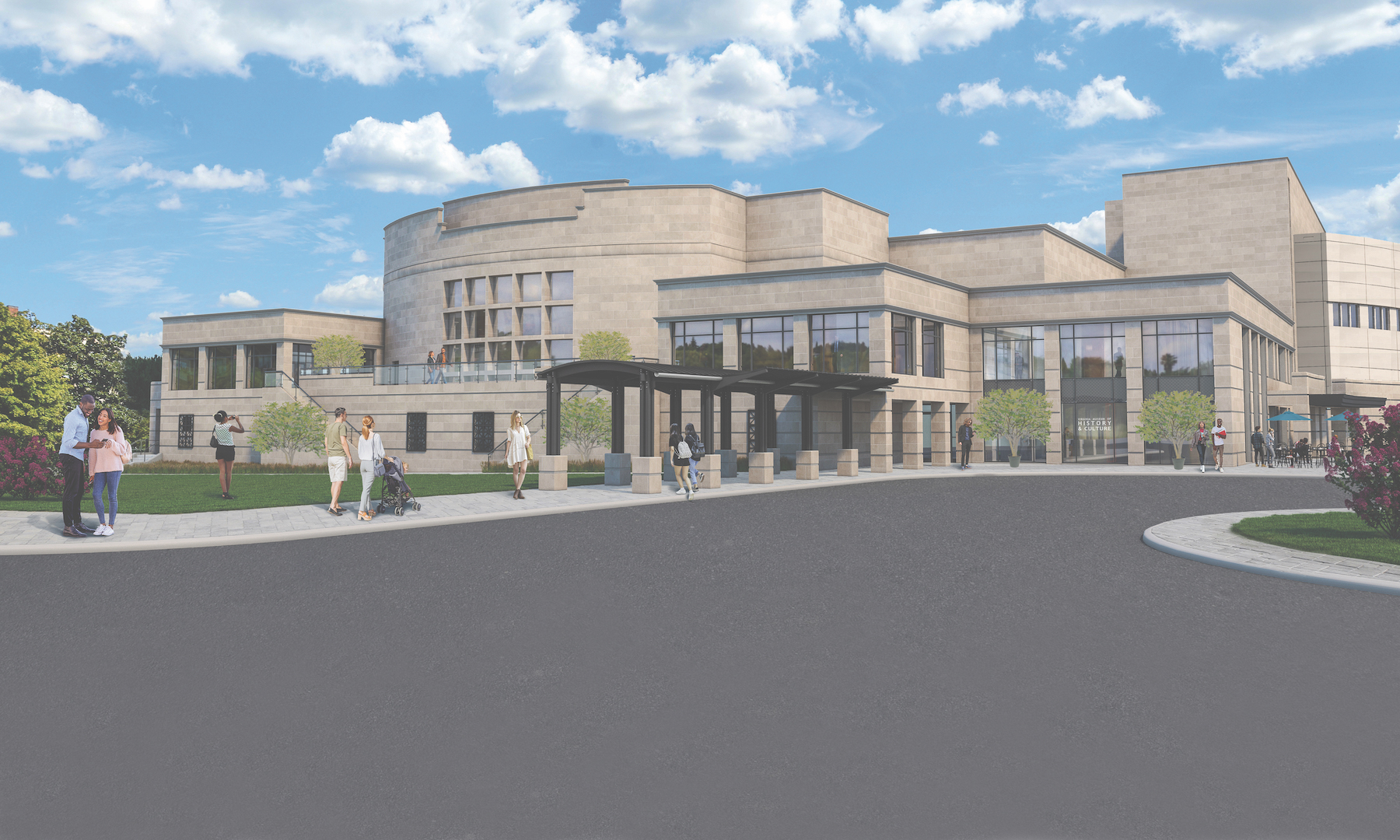
(The Virginia Museum of Fine Arts is also undergoing a $190 million renovation, designed by SmithGroup, that will impact 45,000 of the museum’s existing 650,000 sf of space, and include a new 100,000-sf wing and a 45,000-sf standalone Collections Center building. Construction is scheduled to start in the summer of 2023 for completion in the summer of 2025.)
Some of the Virginia Museum of History & Culture’s main goals from its renovation are to improve its infrastructure and programming, expand attendance by 25 percent, and extend the length of a guest’s visit by 50 percent.
VIRGINIA’S FIVE MAJOR REGIONS HIGHLIGHTED
As part of its reopening, the Museum of History & Culture—whose collection includes more than nine million objects—will debut exhibitions and galleries the present new approaches to learning. For example, Our Commonwealth, a more than 5,000-sf long-term exhibition with a 15-ft-wide video mural, will provide an in-depth, multi-sensory exploration through the five major regions of Virginia, featuring stories and artifacts from partner organizations and cultural institutions throughout the state. The exhibition will include living murals—large-scale, changing digital projections—and custom soundscapes that immerse them in the arts, culture, food, music, industry, and people of each region.
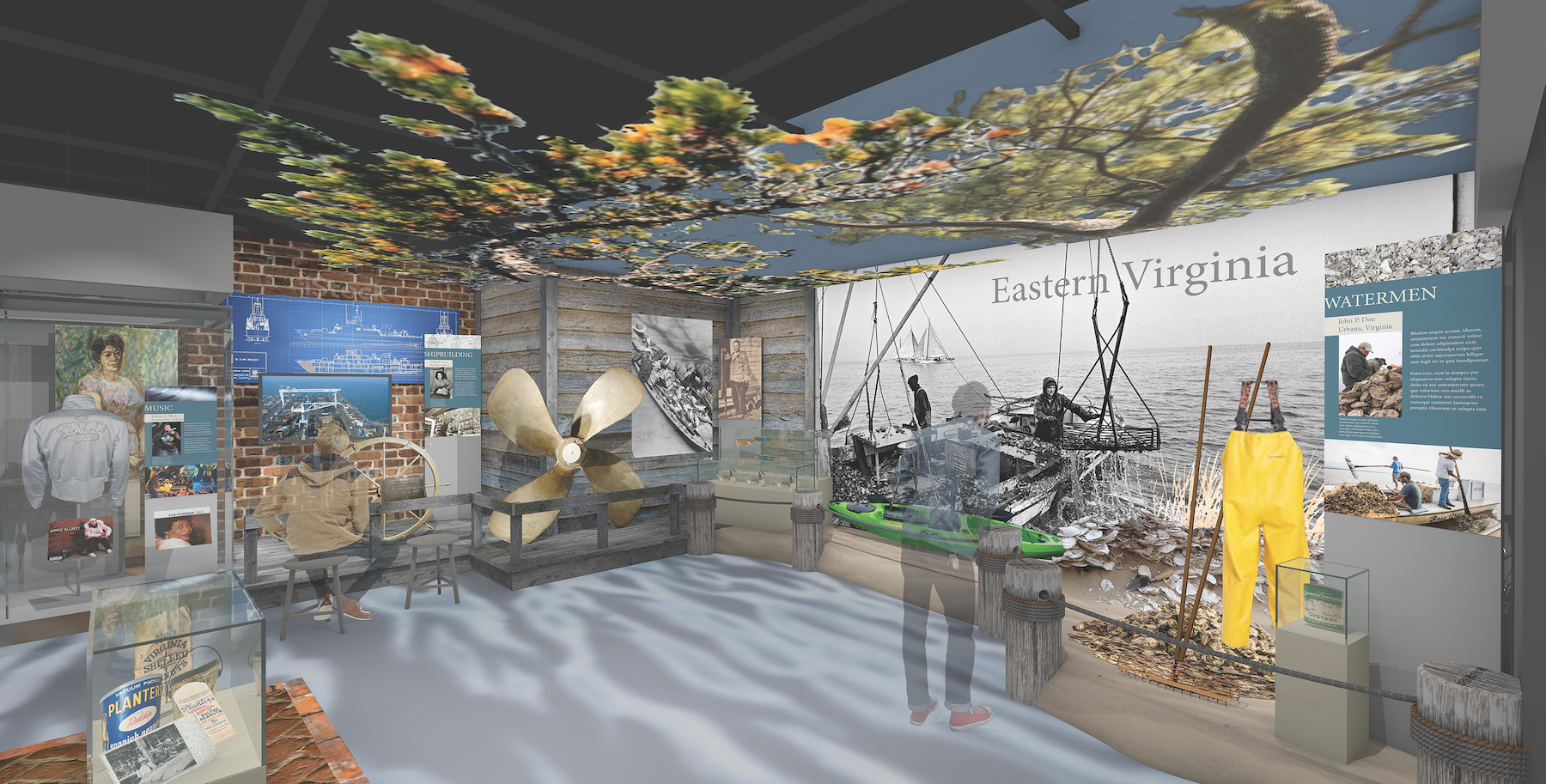
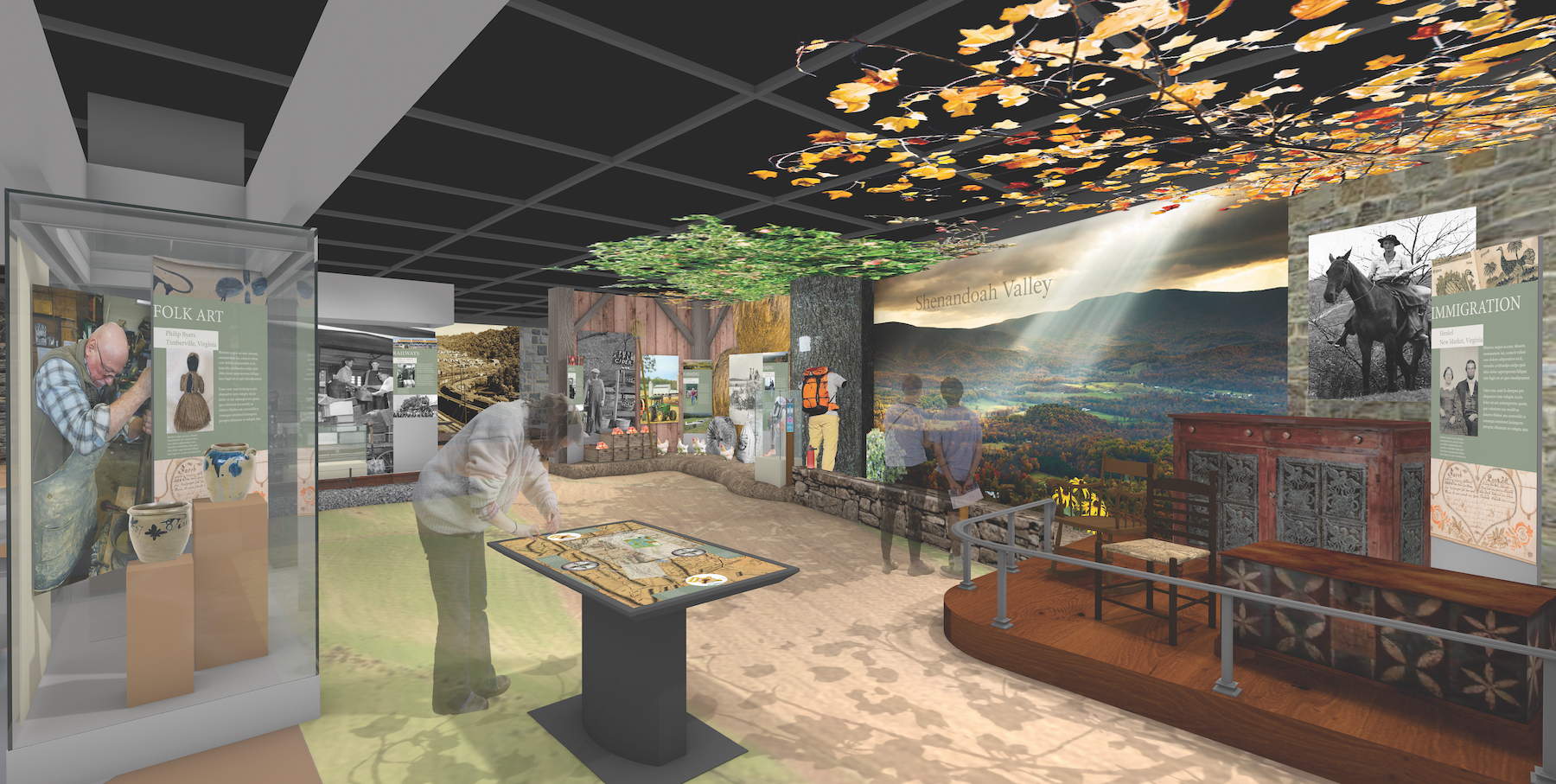
Other exhibits include American Democracy: A Great Leap of Faith, is a Smithsonian-organized display that will dynamically bring the great American experiment of democracy to life. Treasures of Virginia will feature objects associated with Virginians who, through extraordinary leadership and creativity, have worked to shape the future of both our state and our nation. Cheers, Virginia! explores alcohol crafting and consumption practices in Virginia across time. Virginia Explorers is a new interactive learning space for the museum’s youngest guests. The orientation theater will screen Imagine Virginia, a 17-minute film highlighting indelible moments and scenes in the state’s history. The film serves as an introduction to the reimagined museum.
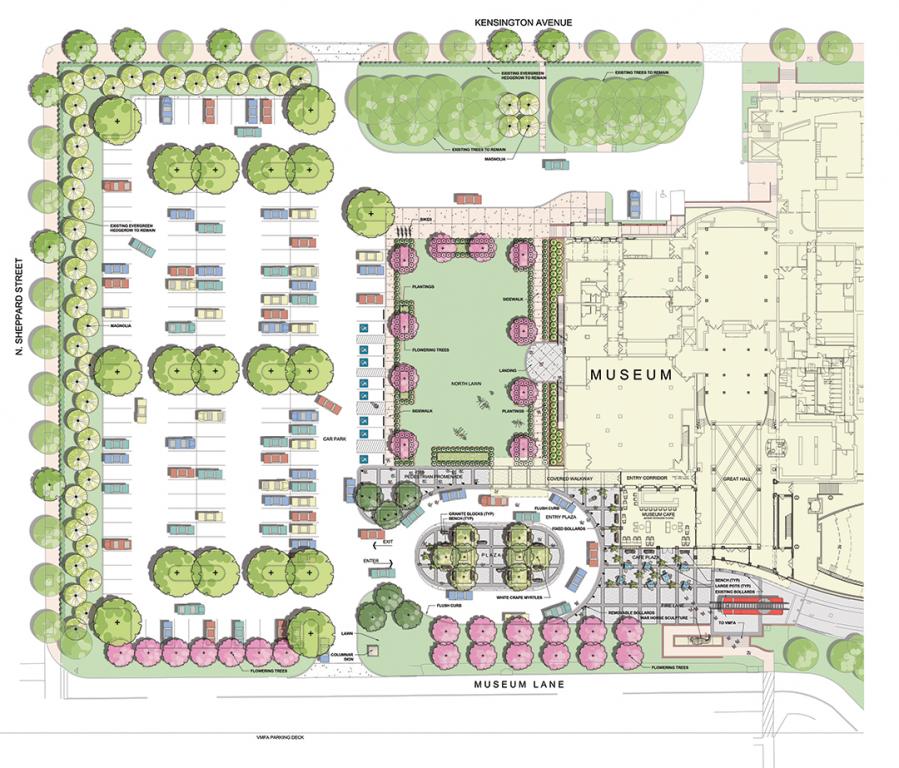
Beyond new physical spaces, the Museum is investing time and resources into a long-term collections partnership with the Black History Museum and Cultural Center of Virginia. In addition, the Museum is a key partner with educators across the state, enhancing the stories that can be told and supplementing the curricula that are pivotal for developing an informed citizenry.
Related Stories
| Nov 14, 2014
Bjarke Ingels unveils master plan for Smithsonian's south mall campus
The centerpiece of the proposed plan is the revitalization of the iconic Smithsonian castle.
| Nov 12, 2014
Chesapeake Bay Foundation completes uber-green Brock Environmental Center, targets Living Building certification
More than a decade after opening its groundbreaking Philip Merrill Environmental Center, the group is back at it with a structure designed to be net-zero water, net-zero energy, and net-zero waste.
| Nov 7, 2014
NORD Architects releases renderings for Marine Education Center in Sweden
The education center will be set in a landscape that includes small ponds and plantings intended to mimic an assortment of marine ecologies and create “an engaging learning landscape” for visitors to experience nature hands-on.
| Nov 5, 2014
The architects behind George Lucas' planned Chicago museum unveil 'futuristic pyramid'
Preliminary designs for the $300 million George Lucas Museum of Narrative Art have been unveiled, and it looks like a futuristic, curvy pyramid.
| Nov 3, 2014
IIT names winners of inaugural Mies Crown Hall Americas Prize
Herzog & de Meuron's iconic 1111 Lincoln Road parking garage in Miami Beach, Fla., is one of two winners of the $50,000 architectural prize.
| Oct 29, 2014
Diller Scofidio + Renfro selected to design Olympic Museum in Colorado Springs
The museum is slated for an early 2018 completion, and will include a hall of fame, theater, retail space, and a 20,000-sf hall that will showcase the history of the Olympics and Paralympics.
| Oct 23, 2014
Prehistory museum's slanted roof mimics archaeological excavation [slideshow]
Mimicking the unearthing of archaeological sites, Henning Larsen Architects' recently opened Moesgaard Museum in Denmark has a planted roof that slopes upward out of the landscape.
| Oct 16, 2014
Perkins+Will white paper examines alternatives to flame retardant building materials
The white paper includes a list of 193 flame retardants, including 29 discovered in building and household products, 50 found in the indoor environment, and 33 in human blood, milk, and tissues.
| Oct 15, 2014
Harvard launches ‘design-centric’ center for green buildings and cities
The impetus behind Harvard's Center for Green Buildings and Cities is what the design school’s dean, Mohsen Mostafavi, describes as a “rapidly urbanizing global economy,” in which cities are building new structures “on a massive scale.”
| Oct 12, 2014
AIA 2030 commitment: Five years on, are we any closer to net-zero?
This year marks the fifth anniversary of the American Institute of Architects’ effort to have architecture firms voluntarily pledge net-zero energy design for all their buildings by 2030.


